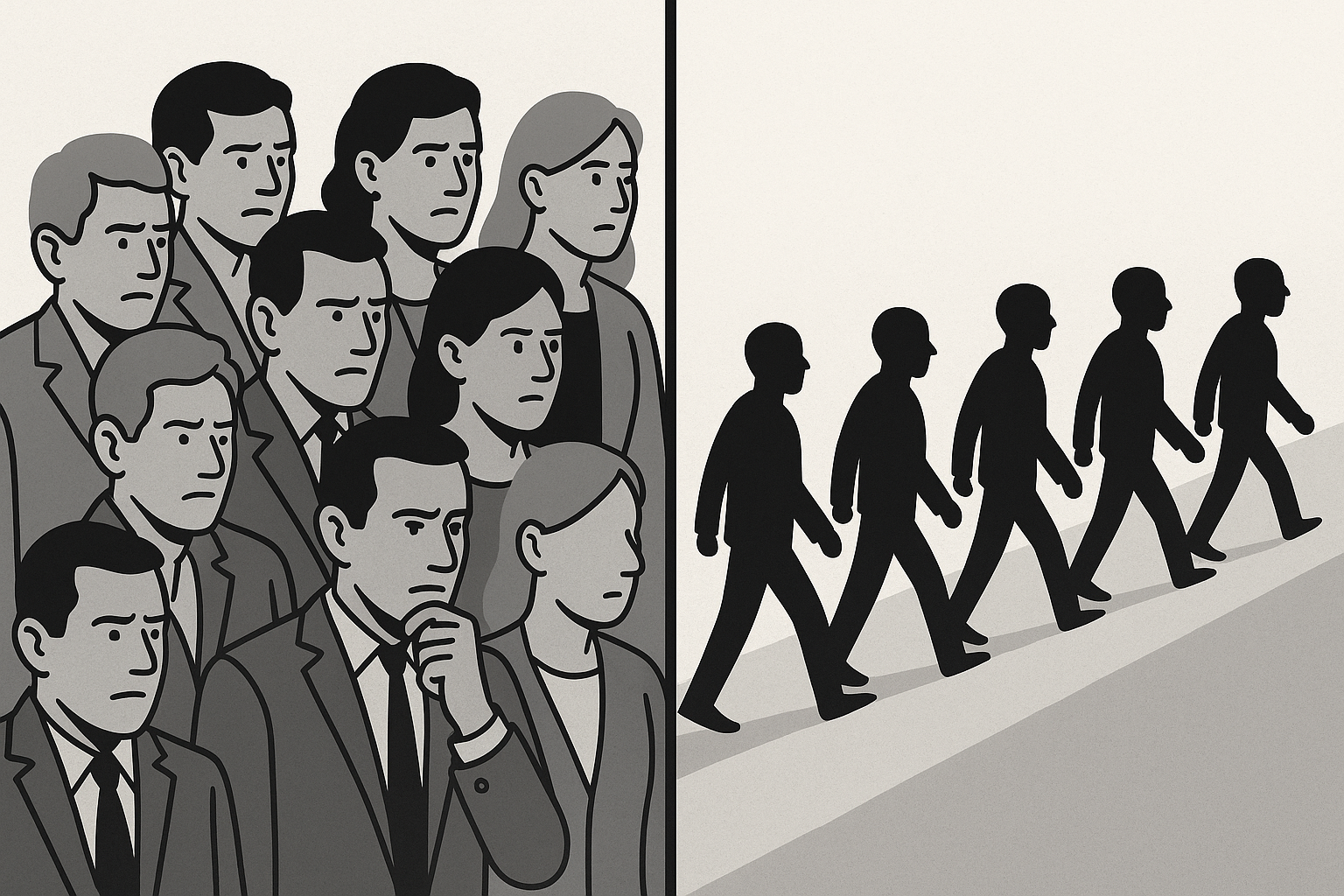Carl Gustav Jung did not define fulfillment as happiness, pleasure, or success. In his psychology, a fulfilled life was one that could be lived through -with meaning, balance, and inner stability – despite suffering, uncertainty, and change.
(more…)Category: Thoughts
-

The Twelve Mahajanas: Timeless Guides for Modern Minds
In the vast body of Hindu philosophical and spiritual literature, the concept of the mahajana stands out as a timeless beacon. The Sanskrit word mahajana translates to “great soul” or “great personality.” In the Bhagavata Purana (Śrīmad-Bhāgavatam 6.3.20–21), twelve mahajanas are identified as spiritual exemplars whose wisdom transcends time, geography, and culture. They are not confined to religious dogma but embody universal principles that remain relevant even today. This article explores who the twelve mahajanas are, what each represents, and why their lessons matter for everyone—including those who may not identify as religious.
(more…) -

The Tally Stick System: An Early Form of Money
Before the emergence of modern banking systems, societies relied on creative methods to record debts and facilitate exchange. One of the most remarkable and long-lasting systems was the tally stick, a physical record carved into wood that acted as a form of currency and credit. Although simple in design, tally sticks endured for centuries and shaped economic life in medieval Europe. Today, they offer a fascinating comparison to both central bank money and emerging digital currencies.
(more…) -

What Is an After Action Review (AAR) and How to Use It in Business
In high-performing organizations, whether military units or innovative corporations, structured reflection is essential for learning and improvement. One of the most effective tools for this purpose is the After Action Review (AAR). Popularized in business contexts by Daniel Coyle’s book The Culture Code, the AAR provides a simple yet powerful framework to analyze actions, outcomes, and future improvements. While its roots are military, the practice has become increasingly relevant in corporate environments, particularly for project teams that need to adapt quickly and learn continuously.
(more…) -

Mental Model of Inversion: Charlie Munger’s Timeless Thinking Tool
The mental model of inversion is a powerful thinking framework popularized by Charlie Munger, the long-time business partner of Warren Buffett at Berkshire Hathaway. At its core, inversion asks us to approach problems by considering the opposite of what we want to achieve. Instead of asking, “How do I succeed?” we ask, “What would cause me to fail?”
This simple shift in perspective allows us to uncover hidden risks, sharpen our reasoning, and make more robust decisions in contexts ranging from investing to life planning. Inversion is deeply rooted in the mathematical method of working backward from a desired outcome—a tool as effective in philosophy and psychology as it is in finance.
(more…) -

The Secretary Problem in Mathematics: Sequential Hiring Decisions and the Marriage Problem
Imagine you’re hiring a new secretary. One hundred candidates will line up for interviews, arriving one by one in random order. After each interview, you must make a decision immediately: hire this candidate on the spot or reject them forever and move on. You cannot recall someone you rejected. The challenge? You want to maximize the probability of hiring the very best candidate.
This fascinating puzzle is known as the Secretary Problem, also called the Marriage Problem or the Sequential Hiring Decision Problem. It blends probability, decision theory, and even philosophy about decision-making in life.
(more…) -

The Fine-Tuned Universe: Why Our Existence Seems Almost Impossible
Imagine tweaking a dial on the cosmic control panel—just a fraction to the left or right. A little more gravity, a slightly stronger nuclear force, a marginally different rate of cosmic expansion. In nearly every case, that small adjustment would have meant no galaxies, no stars, no planets—and no us.
That’s the startling reality uncovered by decades of research in cosmology and physics: the universe’s fundamental constants appear to be shockingly precise. The numbers that govern reality are so delicately balanced that even the smallest shift would erase the possibility of life. This strange fact has been called the fine-tuning problem, and it remains one of the greatest puzzles in science.
(more…) -

How to use Tarot for for Self-Development and Personal Growth
Tarot cards often evoke images of mystical fortune tellers peering into crystal balls, but their true essence goes far beyond mere predictions. In this blog post, we’ll explore how tarot can be a powerful tool for personal development, shedding light on its origins, dispelling common misconceptions, and offering practical ways to harness its reflective potential. Whether you’re a curious intellectual or someone seeking deeper self-understanding, this exploration into tarot might just surprise and inspire you.
(more…) -

The Magic of Sonoluminescence: How Tiny Bubbles Light Up the Dark
What if I told you that a microscopic bubble collapsing in water could produce temperatures as high as the surface of the sun? It sounds like something out of a science fiction movie, but it’s a real phenomenon called sonoluminescence. This natural event has been fascinating scientists for decades because of its ability to transform sound waves into bursts of light and sound.
In this article, we’ll break down the science behind sonoluminescence in a simple, engaging way and explore why it’s more than just a cool party trick – it’s a phenomenon with real-world applications.
(more…)









